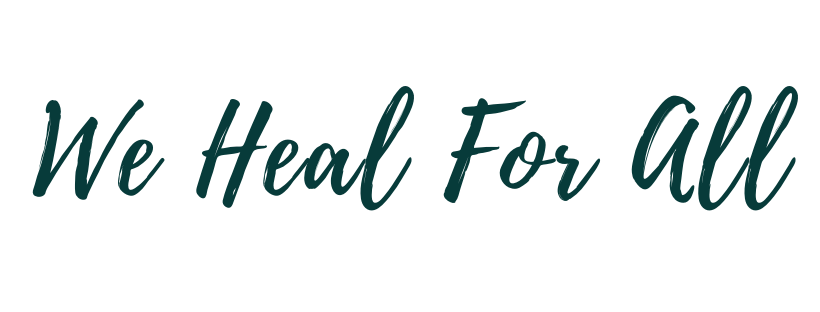Healing and emotions: A superpower for us as changemakers
Healing is needed at a massive scale
It’s no secret that the world’s going through a lot right now. Different people experience it in different ways.
For some it’s connected to the outer world: war, political division, the fight for justice, runaway climate change, a broken government, corporate greed, media bias. The list goes on.
For others it’s connected to their inner worlds: changes in relationships, unearthing old wounds, balancing family, work and personal life, breaking bad habits, trying to live with purpose, shifts in identity.
And then for many of us it’s a combination of all of the above.
This is what I’ve found, anyways, as a change maker and self-identified feeler. To be of service to the world these days requires me to have a relationship with a lot of different emotional energy, both mine and the collective’s. Therefore I’ve spent my life finding ways to weave healing into the work I do.
Healing-centered tools have taught me about the power of emotions, both “negative” emotions and positive emotions, and how working with emotional energy helps unlock hidden resources that are needed to respond to the changing times we live in.
What do you mean by “healing-centered tools?”
Healing-centered tools come in different shapes and sizes.
I specifically use it in the way it is used within the field of clinical psychology, neuroscience, and psychotherapy. Healing-centered therapeutic modalities are ones that use affect- or somatic-oriented approaches to help people.
More plainly put, they work with people’s emotions.
Human emotions are our entry-point
Emotions are at the heart of healing-centered therapies. A person’s feelings, whether they are a “negative” emotion or positive emotions, are the main entry point that is used to help someone change. This is in contrast to traditional talk therapy that uses a person’s thoughts or behaviors as the main entry point.
Let’s ground that in an example—
Let’s say you are experiencing anxiety because of an issue you have with a co-worker. A traditional talk therapist might invite you to discuss the issue at length and analyze why you think it is happening. What past issues or bad habits might this be tied to? In what ways might you be distorting the story you’re telling yourself about why this is happening? What things can you change in the way you act that can make you feel less anxious?
Whereas a healing-centered therapist would invite you to experience the emotional energy you feel within the anxiety in order to process it. This might look like supporting you to slow down and notice what you feel in your body. It could involve validating the normal emotional responses you have towards the situation. The therapist might offer guided meditations to work with images that come up or to regulate your nervous system.
Healing-centered tools, like these, support a person’s emotions to fully express themselves in safe and constructive ways. By doing so, the healing power of emotions reveals guidance and insight about what the person needs and how best to move forward.
The evidence behind the healing power of emotions
The fields of clinical psychology and neuroscience provide us with more and more evidence that the presence of “negative” or challenging emotions means there is an opportunity to heal by working with our emotions.
There is a growing field of research on the healing power of emotions—what emotions are, the neurobiology of them, their evolutionary purpose—conducted by leading edge thinkers. The one I am most influenced by is called accelerated experiential dynamic psychotherapy, or AEDP for short, founded by Dr. Diana Fosha, PhD. AEDP offer us a wealth of knowledge about the healing power of emotions and what that looks like in practice.
Hilary Jacobs Hendel, LSW and AEDP Institute supervisor is a grounding light within the conversation on emotions. Her award-winning book It’s Not Always Depression takes the cool, cutting-edge things we are learning about emotions from the fields of neuroscience and clinical psychology and shares them with us in approachable and user friendly ways. Her work is the clearest and most grounding explanation of emotions I have found. Her emotions education is a strong basis for the healing-centered collective healing practices I share with you here through We Heal For All.
Healing emotional energy from the world’s pain
In a day and age when things are changing exponentially fast and asking us to grapple with issues that are existentially fraught, healing-centered tools and the growing field of evidence around them offer us ways to work with the normal emotional energy that comes with caring about the world, both for ourselves and for the collective.
As change makers, helpers, and healers, I’m of the mind that we need new forms of support that match the newness of the times we live in. Healing-centered tools help us show up whole-heartedly and be of service to the issues and causes we care about without burning out or collapsing under the weight, overwhelm, and uncertainty of it all.
The healing power of emotions within the work of being a change maker is something that I feel like is under-explored, which is why I launched We Heal For All. To be a place to bring cutting-edge tools from across science and spirituality to change makers and others who care deeply about our world.
Does this resonate? Looking to go deeper?
Then I have just the thing for you:
Check out my self-paced Emotions 101 with Yoga course. Designed with my fellow feelers and emotions-curious friends in mind to teach you the in’s and out’s of emotions and provide you with opportunities to get to know yours better.
Hi, I’m Liz Moyer Benferhat. Writer, facilitator, and development practitioner dedicated to the subtle interplay between how inner transformation feeds the outer transformation we need in the world. Welcome 🌿




